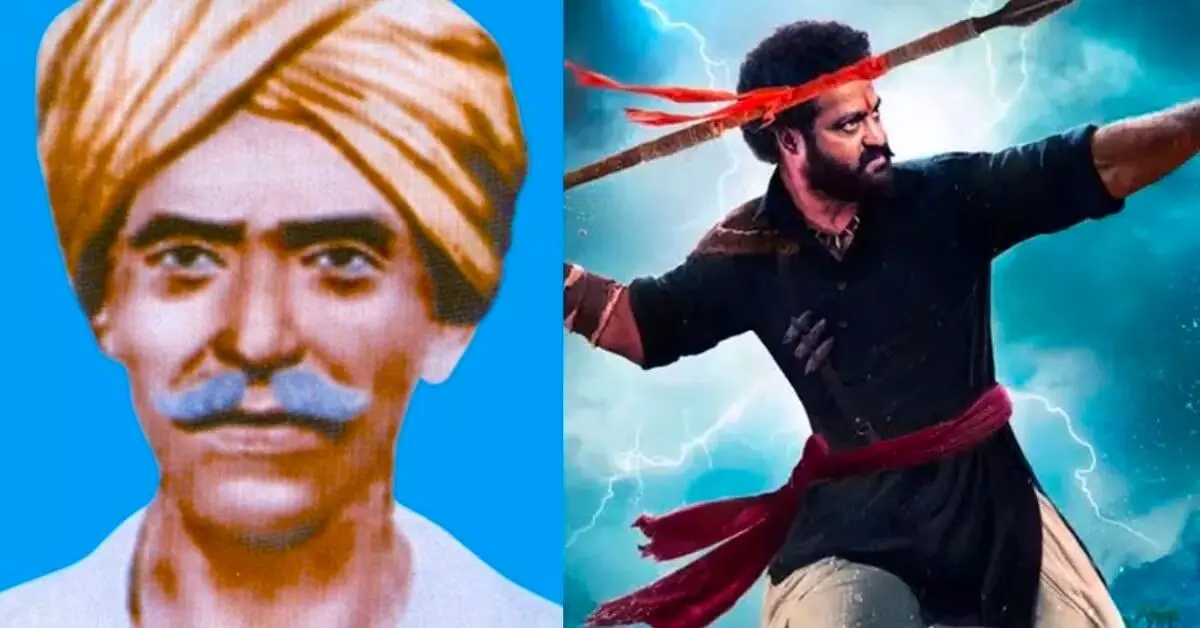A legend, a martyr: Who was Kumram Bheem?
Kumram Bheem, or Kumra Bheemu as he was originally known, was an aboriginal tribe leader who attained martyrdom on 1 September 1940 having been felled by bullets of the Nizam's police force. He was killed in Jodeghat village in the present-day Kerameri mandal in Kumram Bheem Asifabad district where the present government has constructed a memorial for him and a tribal museum in his honour.
By S. Harpal Singh
Adilabad: Only time will tell if Jr. NTR will be nominated for this year's best actor Oscar for his role of tribal leader Kumram Bheem in S.S. Rajamouli's blockbuster 'RRR'. While international film critic Clayton Davis of Variety has strongly made a case for 'RRR' to be India's selection for the coming Academy awards in the best film category, social media is abuzz that he opined that Jr. NTR would be a strong contender for the coveted best actor award if he is nominated in that category.
But who was Kumram Bheem whose over eight-decade-old story inspired the movie mogul to come out with the monumental action film and inspired Jr. NTR to give such a riveting performance?
Kumram Bheem, or Kumra Bheemu as he was originally known, was an aboriginal tribe leader who attained martyrdom on 1 September 1940 having been felled by bullets of the Nizam's police force. He was killed in Jodeghat village in the present-day Kerameri mandal in Kumram Bheem Asifabad district where the present government has constructed a memorial for him and a tribal museum in his honour.
According to the Note on the clash between the police and the Gonds in Asifabad district, given out by the then director-general of police, Hyderabad state, on 10 September 1940, the martyr had rebelled against the Nizam, the then ruler, in pursuance of the demand of Adivasis for rights to cultivate lands in Jodeghat. The final clash with the police came on 1 September when the armed men led by the incumbent first Talukdar had gone to Jodeghat to arrest the small Gond rebel group who had failed to attend court in a relevant case.
As the band of rebels, which included Kolam tribals, remained defiant, and the police opened fire killing 10 of them on the spot and injuring 13 others besides arresting 31, according to the Note. Among those killed was Bheemu who had presumably waged a war for a decade preceding his martyrdom.
The martyr was born (date unknown) in Routa Sankepalli Gondguda in present day Asifabad mandal, abandoned since his metamorphosis as a fighter for land rights. He had migrated to Kothari and later to Babejhari from where he finally went to Jodeghat.
Bheem had become a legendary figure among the ethnic people inhabiting the forests and highlands of that region no sooner he began his struggle. The conflict between the tribals who claimed a "natural" right to till forest lands arose after the Nizam's government brought in the Forest Conservancy Act in 1920 which barred any felling of trees in the forest.
There are many mysteries associated with the life of the martyr which would have surely been shown in the film had Rajamouli known about them. One such legend was Bheem's knowledge of the occult which made him invincible to enemy attacks.
"He was killed as he was betrayed by one of his own. The betrayer had informed the police about the vulnerability of the martyr at the particular time," Athram Barik Rao of Chaupanguda put it as he recalled the exploits of the legendary leader.
The Raj Gond and other Adivasis observe the martyrdom anniversary on the first full moon after Dasara at Jodeghat. The Integrated Tribal Development Agency, Utnoor, is organising the event since the early 1980s.